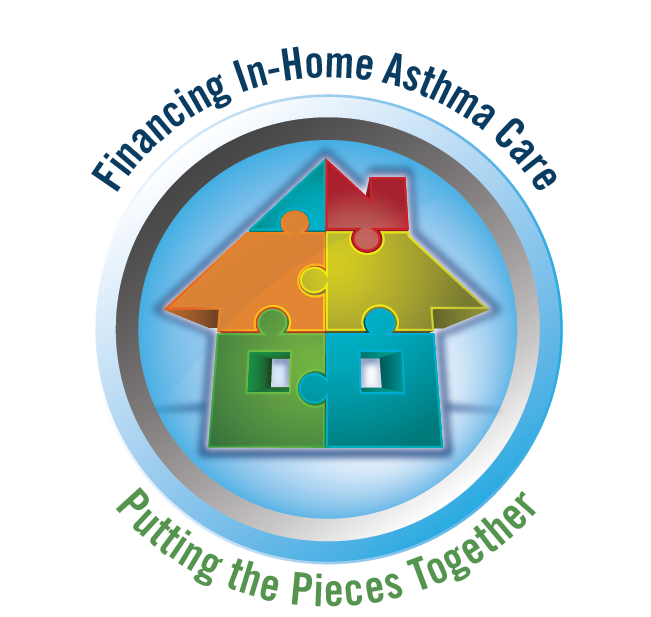
Home visits create the opportunity to provide care while also educating and supporting people with asthma to better manage their disease. Evidence shows that in-home asthma education combined with environmental trigger remediation can significantly improve health outcomes and the costs of asthma care.
When pursuing financing for in-home asthma care, it is important to let funders, partners and stakeholders know about the proven value of asthma home visits as well as your program's specific value proposition.
Evidence of the Cost/Benefits of In-Home Care & Program Models
- Community Health Worker Home Visits for Adults With Uncontrolled Asthma: The HomeBASE Trial Randomized Clinical Trial
Krieger et al, JAMA Internal Medicine, 2015;175(1):109–117
To test the hypothesis that community health worker (CHW) home visits for adults with uncontrolled asthma improve outcomes relative to usual care, this study randomized parallel group study with 1-year follow-up at homes of low-income adults aged 18 to 65 years with uncontrolled asthma living in King County, Washington. CHWs provided a mean of 4.9 home visits during a 1-year period to assess asthma control, self-management, and home environment and to support asthma self-management practices.
Of 463 individuals who completed eligibility screening, 443 were eligible, 366 participated (177 in intervention and 189 in control groups), and 333 completed the study (91%). The intervention group had significantly greater increases in mean symptom-free days per 2 weeks (2.02 [95% CI, 0.94-3.09]; P < .001) and quality of life (0.50 [95% CI, 0.28-0.71] points; P < .001) relative to the control group, adjusted for age, sex, race/ethnicity, and education level. The number needed to treat to increase symptom-free days by 2 days per 2 weeks was 7.4 and to improve quality of life by 0.5 points was 2.6. Mean urgent health care use episodes in the past 12 months decreased significantly and similarly in both groups, from a mean of 3.46 to 1.99 episodes in the intervention group (mean change, −1.47 [95% CI, −2.28 to −0.67]; P < .001) and from a mean of 3.30 to 1.96 episodes in the control group (mean change, −1.34 [95% CI, −2.00 to −0.72]; P < .001) (P = .83 comparing groups).
Conclusions and Relevance: The provision of in-home asthma self-management support by CHWs to low-income adults with uncontrolled asthma improves asthma control and quality of life but not unscheduled health care use. Additional studies are needed to confirm these findings and determine the value of wider implementation of this approach.
- Economic Value of Home-Based, Multi-Trigger, Multicomponent Interventions with an Environmental Focus for Reducing Asthma Morbidity-A Community Guide Systematic Review
Nurmagambetov et al., American Journal of Preventive Medicine, 2011;41(2Suppl1):S33–47
Complements the effectiveness review (below) by identifying the economic values of home-based interventions and presents ranges for the main outcomes (e.g., program costs, benefıt–cost ratios, and incremental cost-effectiveness ratios). - Effectiveness of Home-Based, Multi-trigger, Multicomponent Interventions with an Environmental Focus for Reducing Asthma Morbidity- A Community Guide Systematic Review
Crocker et al., American Journal of Preventative Medicine, 2011;41(2Suppl1):S5–32
Reviews evidence on home-based, multi-trigger, multicomponent interventions and concludes they are effective in improving overall quality of life and productivity in children and adolescents with asthma. - Home is Where the Triggers are: Increasing Asthma Control by Improving the Home Environment
James Krieger, Pediatric Allergy, Immunology, and Pulmonology, 2010;23(2)139–145
Presents evidence of effectiveness of multi-trigger, multiple intervention home visits at reducing exposures, decreasing symptoms and urgent care, and increasing quality of life. Calls to make home visits widely available through payer reimbursement, government and health plan funding, training and certification of home visitors, and active referrals from health-care providers. - Asthma Control: Home-Based Multi-Trigger, Multicomponent Environmental Interventions
The Community Guide, 2008
Presents evidence of effectiveness of home-based, multi-trigger, multicomponent interventions with an environmental focus at improving overall quality of life and productivity for children and adolescents with asthma.
Assistance For Health Plans
- Implementing an Asthma Home Visit Program: 10 Steps to Help Health Plans Get Started
U.S. Environmental Protection Agency, 2005
Learn how to start an asthma home visit program with an emphasis on environmental risk factor management.
More Resources
- Building Systems to Sustain Home-Based Asthma Services
National Center for Healthy Housing
Realize the full value of home-based asthma services and advance your program's efforts to institute or expand availability of such services sustainably in your state, community, or region by visiting this eLearning platform.
Webinars
- Economic Evaluation of Home‐Based Environmental Interventions
Tursynbek Nurmagambetov, Centers for Disease Control and Prevention National Center for Environmental Health, 2009
Explore asthma control through home-based interventions and evaluate the economic implications of these interventions. Tursynbek Nurmagambetov, from the CDC National Center for Environmental Health, examines economic evaluations in public health and demonstrates the value for home-based environmental interventions. - The Science and Value Behind Targeted Home Environmental Interventions
Gema Dumitru, Centers for Disease Control and Prevention, 2009
Learn how home environmental interventions affect quality of life, health care utilization and productivity for people with asthma. This resource also presents the applicability, barriers to implementation, and additional benefits of these interventions.
Podcasts
- Episode 5: Environmental Triggers: A Medical Perspective
Dr. Jay Portnoy, Children's Mercy Hospital & Clinics, 2013
Assessing and controlling environmental triggers is an important step in managing asthma. Dr. Jay Portnoy explains how his hospital effectively integrates home environmental assessments into patient care and shares his perspective on the future impact of this preventative approach to health care delivery.
AsthmaCommunityNetwork.org Spotlight
- Housing & Health: Effective Interventions for People with Asthma. Cleveland’s Case Healthy Homes & Patients Program (CHHAP) reduced pediatric asthma hospitalizations by 58.6 percent.